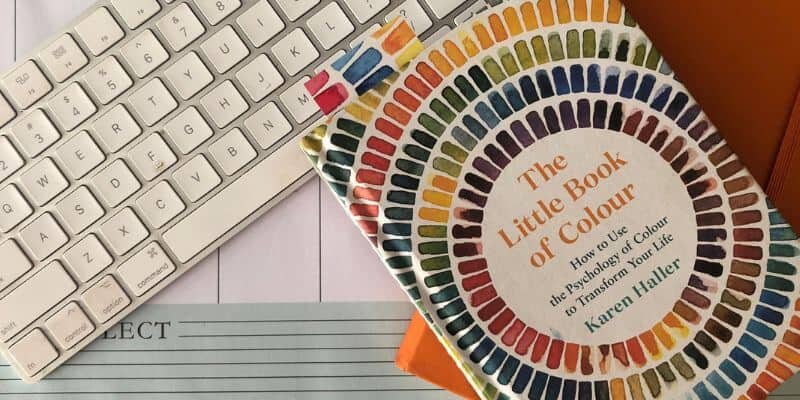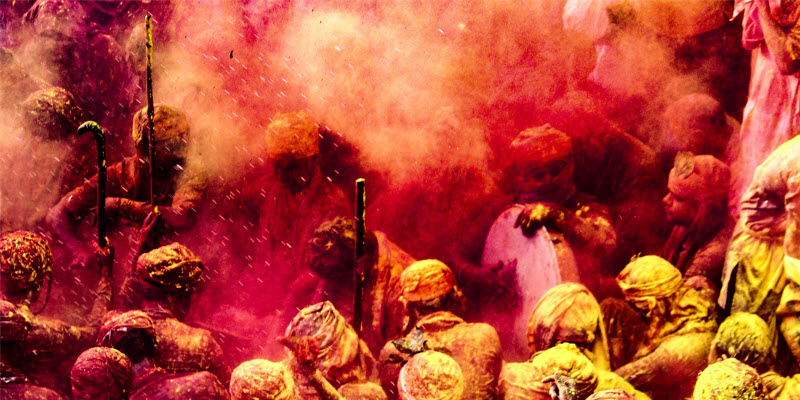Why Designers love The Little Book of Colour

Karen Haller

When I first had the idea to write a book I wanted it to be for designers and creatives but I was told that was a no go. From the many conversations I had over the years, they told me they didn’t need a book on colour because they used colour intuitively.
So when Penguin approached me to write a book on colour we both agreed that it would be better to write it for the everyday colour lover and for those who are scared of colour or scared of getting it wrong.
So that’s what I did, I wrote a book to help the everyday person to fall back in love with colour again and show them how colour could be used to feel better, bring joy and boost their wellbeing because these are all the things that colour can innately do.
But here’s what I didn’t see coming…
Designers and creatives love the book and in fact they have been the biggest purchaser of the book to date.
A caveat here, if you haven’t read the book yet, it’s not a design book and it won’t teach you how to do your design work, despite it being chosen by the UK Sunday Times in their top 10 design books list. However, designers and creatives who have contacted me say, and I still regularly receive feedback even after four years, that the book helped them see things they weren’t consciously aware of. Things such as:
- Giving them the words to what they were sensing but didn’t know how to explain
- Backing up what they were intuitively feeling
- Giving them the answers they have been searching for
- Giving them insights into the mindset of how their clients are thinking and their fears around colour
- Helping them to have better conversations with their clients when it came to discussing colour.
The impact of this book has had on designers and creatives has been a wonderful side-effect. And it has been received so well because the book opens up a whole world of using colour that the traditional colour wheel theory doesn’t. It helped clarify what they didn’t have words to express, because they can see that colour goes far beyond the colour wheel.
What the book did for designers and creatives is open up a way they could see to use colour in their work that would build on their existing colour knowledge and it has left them wanting to know more.
And along with them realising there was more to colour with this book so too did their customers and clients, who became more colour aware and are asking intelligent, knowledgeable colour questions when it came to design work.
This has left designers realising they have to up their game in order to match their very colour aware clientele and with a huge desire to take their work in this direction and utilise colour psychology and the results it can deliver.
But as it’s not a design book it won’t do that because it doesn’t show the depth or explain how to use colour psychology from the designers’ perspective.
For designers to understand colour psychology and the depth they need to use it in their design work they need something in addition to the book.
That is my 6-month Advance Colour & Design Psychology Mentoring Programme.
What I teach inside this course are the missing pieces designers need to use colour and design psychology in a professional capacity. When you have this in your toolkit it allows you to:
- Use all of nature’s colours and palettes (and not just rely on green and wood) to create harmonious nature-based palettes that we as humans respond positively to
- Focus on using colour to positively influence behaviour which is the basis of colour psychology
- Use logic and rationale to explain and back up your intuition
- Integrate this with Biophilic, Sensory or any nature-led design methodology
- Leverage nature’s system as design templates to solve human challenges.
I teach this and so much more that the book doesn’t cover inside my 6-month Advance Colour & Design Psychology Mentoring Programme.
If you would like to find out more on how you can use colour and design psychology and colour harmony within a nature-led framework to get consistent, repeatable results in your design work along with the logic and rationale to back up your intuition, then this course is for you.
You can check out more details over here.
Colourfully yours,
Karen


